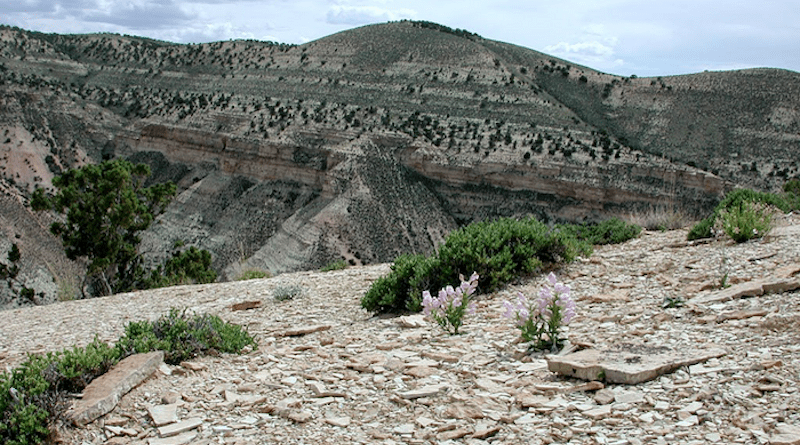Mapping The Middle Ground: Balancing Mining Activities With Survival Of Utah’s Rare Plants
It can be easy to assume that the vast stretches of desert in southeastern Utah and southwestern Colorado are mostly barren landscapes — but in truth, the sagebrush-strewn Colorado Plateau is awash with treasure.
Above the ground, rare plants like milkvetch, beardtongue penstemon and sclerocactus manage survival under the harshest of ecological conditions, each something of an ecologically niched miracle. Far beneath the surface of the earth, meanwhile, the region offers abundant oil, gas and alternative energy potential scattered among a patchwork of land ownership.
In newly published research, Joshua Carrell, Edd Hammill and Thomas Edwards from the Quinney College of Natural Resources are mapping out strategies so that an emerging demand for proposed energy development projects and the survival of Colorado Plateau’s rare plant populations don’t have to be mutually exclusive endeavors.
With global oil demand projected to increase by 50 percent between 2007 and 2030, energy development potential is being actively developed on both public and private lands across the plateau. Oil drilling is not light on a landscape — a recent project proposed hundreds of miles of new roads and pipelines with hundreds of thousands acres of land slated to be heavily impacted to accommodate 4,000 new oil wells, for example.
Building unpaved roads and drilling pads can damage plant communities by direct habitat loss. But roads cutting across a landscape also create barriers for seed dispersal, introduce exotic species (such as cheatgrass) that crowd out native plants, and increase dust that coats leaves and stems of plants, reducing their ability to photosynthesize sunlight. Dust, noise and turbulence that accompany large-scale projects also disturb pollinators like bees and moths that plants rely on for reproduction.
With these kinds of intense impacts on the horizon, the team hopes to find a way to allow rare native plants to continue survival on the Colorado Plateau. Previous science suggests that if, at a minimum, 30 percent of a threatened plant species can be protected, a community can hold on to the potential for long-term survival. Dip below that number, and a plant’s fate becomes more tenuous.
The team developed a new method to model how rare plants are distributed across the Colorado Plateau, one that includes strategies for structuring energy projects to optimize the use of space to minimize their impact. The model doesn’t work in an ecological vacuum — it considers factors like land ownership, potential for energy extraction at a site, and biodiversity.
“The key to finding workable solutions in these kinds of circumstances is to think both like an ecologist and an energy developer, and to work within that space,” Edwards said. “Conservation planning frameworks don’t always incorporate real-world limiting factors such as financial considerations, business risk and land ownership. But those considerations are essential for finding workable solutions. Reality-based strategies require the consideration of all these things.”
The key to this strategy is to use space wisely, Carrell said. No solution can completely meet objectives for both plant conservation and energy extraction. But where there is direct conflict, the model can help land managers accommodate a level of balance, he said.
The team identified and mapped specific locations where conservation actions to protect plant communities would get the most bang for their buck. They found the minimum number of sites required to cover 30% of each species at the lowest financial cost to developers. By optimizing and minimizing the amount of land units slated for conservation, they were able to allow more areas open for energy development and exploration.
This approach might require developers to move planned roads, to build around certain protected areas, or drill horizontally in some places to protect a high-priority location, at some additional cost. But the model acknowledges that energy development in the area is headed toward the inevitable, and accommodates that.
“It’s not a perfect scenario,” Edwards said, “but this approach provides opportunities for a best-case-scenario given the reality of circumstances.”

